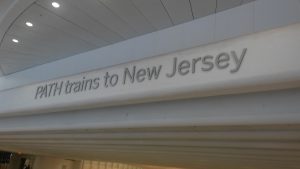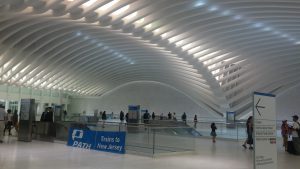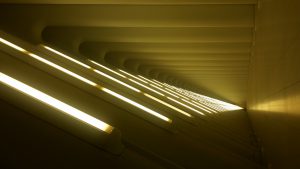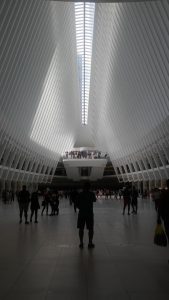The start of a new month has begun; September, bringing forth days of cooler temperatures and fall foliage. For many New Yorkers it also brings retrospective thoughts of the tragedy that happened on September 11, 2001. It, surprisingly, has been sixteen years since the disaster took place but New Yorkers still vividly remember its havoc that struck us so deeply. As the memorial approaches, I thought it would be nice to pay homage to a piece of architecture that subtly reminds us of this terrible day, honors the strong survivors and first responders, and supports the loved ones subjected to an overwhelming loss.
Something most don’t know about the after effects of 9/11, is how determined and reactive New York was to rebuild. By 2002, many proposals had flooded New York City from all around the world, in the hopes of helping with the process of rebuilding. Something that was not a part of the overall plan was the remastering of the the PATH train station. But in 2004 the city concocted a plan with Spanish architect, Santiago Calatrava, to create a partial above and below ground transportation hub. He soon proposed a project named the “Oculus” which was supposed to embody “… the release of a bird from a child’s hand…” Calatrava named it the Oculus since on September 11th the skylight is supposed to be exactly positioned for a bright beam of sunlight to shine through the hub; similar to the Pantheon’s oculus in Rome. This sentimental effect takes place from 8:00 to 10:28; the time that the World Trade Center was struck.
Once the proposition was accepted, its progress and popularity only went downhill. The budget was exceeded by large proportions and constant variance of financial obstruction and waste was brutally thrown at the project; making the construction near impossible. Hurricane Sandy in 2012, alone, eradicated millions of dollars worth of material and other structural elements. The overall design was constantly amended to save money and time. A major change being how the extended columns were supposed to be automated and move with the available sunlight; the tight budget kept this feature from coming into fruition.
After years of dedication, amendments, and withstanding negative media from disbelieving New Yorkers, The Oculus was completed and opened to the public on March 4, 2016; taking about 12 years to produce. The opinions were very mixed about the transportation hub since some were amazed by the respectful design, it’s potential for bringing tourist/revenue, and the methodology of transporting people from one place to another. Contrastly, others thought it was a waste of additional money and didn’t quite see the beauty in the hub.
I, personally, think Calatrava’s Oculus is beautiful and is a great way to show respect for that critical day of New York City history. The pure white wings extends 96 feet in the air from where the unfortunate rubble once laid. Delicately and valiantly, it rises; gracing its viewers with a glance before it releases itself to Freedom Tower. At night, its light illuminates between the columns making the Oculus visible from great lengths which shows us how important it is to let the light and positivity shine through our streets, course through our veins, and beat ever so heavily in our hearts because it is our duty, as New Yorkers, to prevail over any type of circumstance.











